Imagine you have a mountain of data. Even with all the reports, charts, and graphs, it's still unclear what the numbers mean. So, you start to analyze the data, looking for patterns, anomalies, and trends. Soon, you uncover a surprising insight that could save your company thousands of dollars. But you get interrupted before you can share the findings with your team. When you finally return to it, the moment has passed. Someone else has taken over the project, and your insight is irrelevant. This scenario illustrates common challenges business analysts face when improving organizational productivity workflows, especially under tight deadlines and increasing pressure to perform. The good news is that AI tools for business analysts can help prevent these frustrating situations by streamlining productivity workflows to help you uncover insights faster before they lose relevance. This article will explore the best AI tools for business analysts to improve productivity and performance.
Antispace’s AI-based productivity operating system offers another way for business analysts to improve productivity workflows. By integrating with existing tools and platforms, you can help teams uncover insights faster, improving organizational performance.
How Can AI Tools Help Business Analysts?

By analysing vast amounts of data, AI can generate more complex and accurate predictive models that provide deeper insights and anticipate trends. For instance, a retail chain wants to optimise its inventory levels and avoid overstocking or stockouts.
AI-Powered Sales Forecasting for BAs
To achieve this, AI will use historical sales data, weather patterns, economic indicators, and social media trends. Next, it will identify correlations within the data, build predictive models to forecast future demand, and simulate scenarios to assess potential impact on sales.
Based on the forecasts and analyses, trained BAs like you can optimise inventory levels, reduce waste, and improve customer satisfaction.
Customer Sentiment Analysis: How AI Improves Understanding Of Customer Opinions
During customer sentiment analysis, you can evaluate and interpret your customers’ opinions, emotions, and attitudes based on their spoken or written feedback. This allows BAs or future BAs like you to transform customer sentiment into actionable insights that businesses can understand and respond to.
Generative AI models can help you process and analyse unstructured data like social media posts, reviews, and customer feedback. Ultimately, this allows your organisation to understand customer sentiment and preferences.
Using AI to Address Customer Concerns
If your business wants to address customer concerns in one of its products, you can use AI to analyse social media buzz and customer reviews. As a trained BA, you can interpret the findings generated by the AI tool in a manner that stakeholders can easily understand.
Additionally, you'll have the skills and knowledge to ensure that these align with your company’s objectives and needs.
Process Automation: How AI Tools Help Streamline Business Analysis
Businesses are increasingly using AI to automate repetitive tasks. For example, it can be used to speed up the production of automotives and reduce the risk of human error. Apart from these, the technology helps you streamline and automate repetitive business analysis tasks. Consider a company dealing with a large volume of critical documents.
AI can automatically extract important information from these files (e.g., dates, contract terms, and names), classify them based on content, and store them properly. This reduces the need for admin work like manual document management, allowing BAs to focus on more critical tasks, such as analysing the insights within these documents.
Related Reading
- What Is Productivity Software?
- Pyramid of Productivity
- Small Business Intelligence
- Using AI to Enhance Business Operations
- Methods to Improve Productivity in Operations Management
- AI Workflows
19 Best AI Tools for Business Analysts
1. Antispace
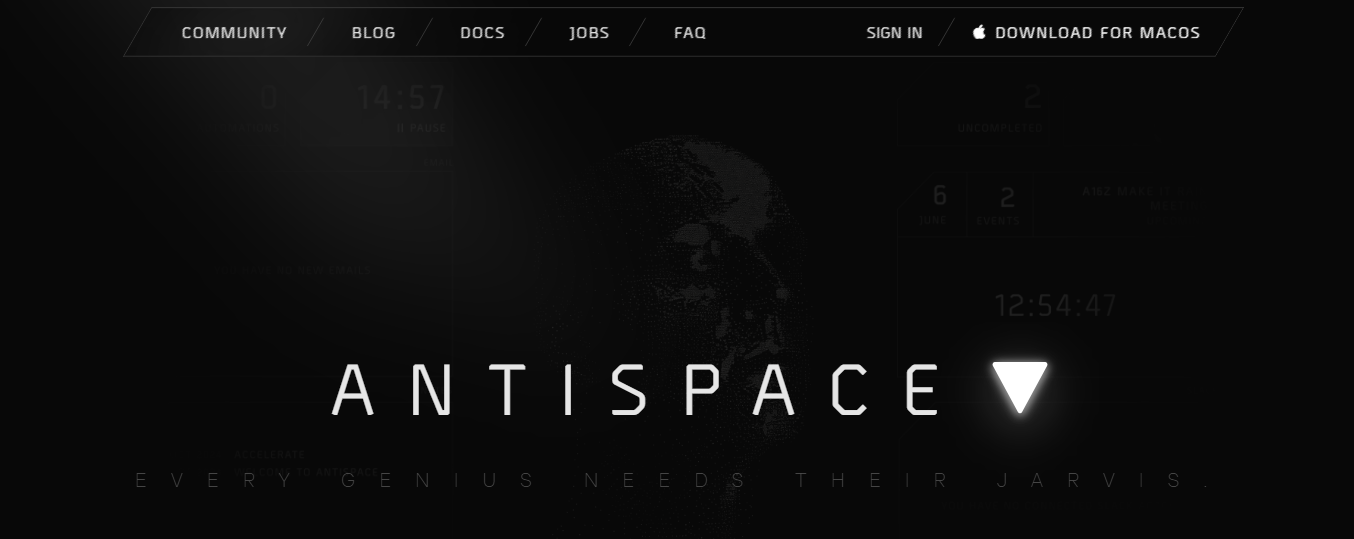
Antispace transforms your daily workflow with an AI-based productivity operating system. Our platform seamlessly integrates with your essential tools:
- Calendar
- Notes
Our AI assistant handles everything from email management to task organization. We've built intelligence into every aspect of your workflow:
- Smart email responses
- Automated calendar management
- Enhanced note-taking
- Streamlined task coordination
Your AI Executive Assistant for Effortless Productivity
Antispace is your virtual executive assistant. It reduces context switching and automates routine tasks, letting you focus on what matters while our AI handles the rest.
Whether you're brainstorming ideas, managing communications, or coordinating projects, Antispace turns productivity from a chore into an engaging experience. Get started for free with one click today.
2. Medallia

Have you ever had to go through a ton of customer reviews or social media comments? It can take forever. That’s where Medallia comes in.
Medallia uses AI to process text data and shows you the important stuff. It can help you understand customer opinions quickly. You don’t need to go through each review or comment manually. The AI reads and organizes the data for you.
Spotting Customer Trends
For example, you’re reviewing customer feedback. Medallia will help you spot trends and determine what customers like or dislike. You won’t have to spend hours reading every comment; Medallia does it for you!
Medallia can also break down customer emotions, such as whether they are happy or upset. It’s an excellent tool for analyzing large amounts of text and finding patterns.
3. Tableau
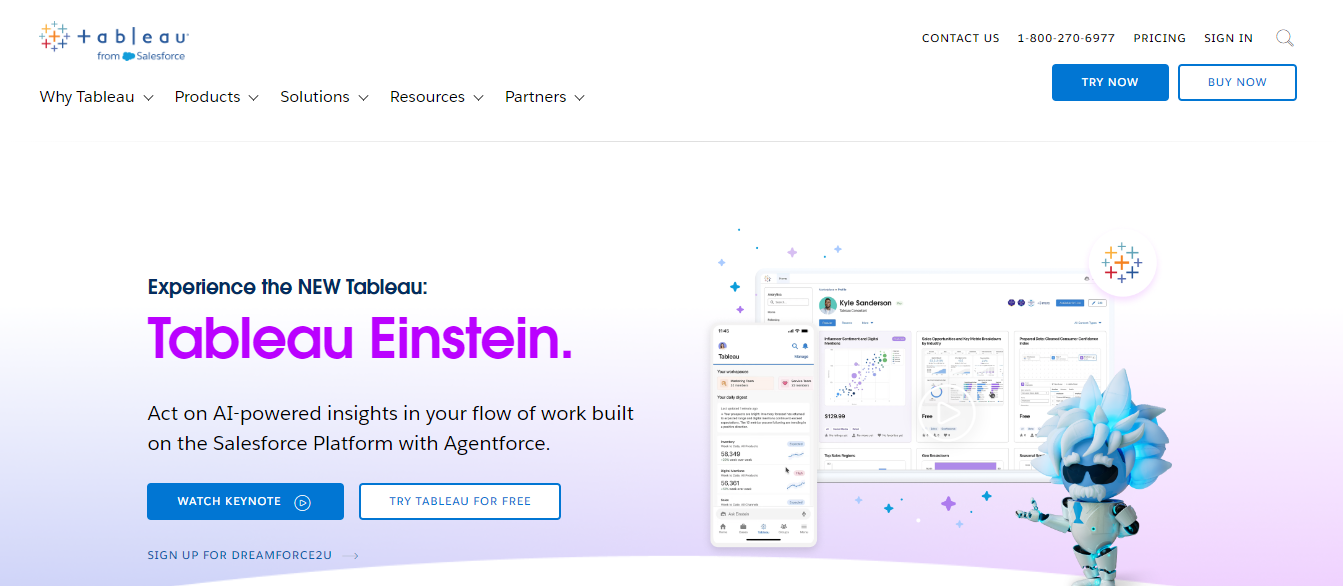
If you like working with data but hate looking at endless rows of numbers, Tableau is the tool you need. Tableau makes it easy to turn boring data into colourful charts and graphs.
But that’s not all, Tableau’s AI features suggest patterns and trends you might have missed. For example, it might show a correlation between sales numbers and customer feedback you hadn’t seen. It even suggests the best ways to visualize your data.
Visualizing Data Smarter
You can connect Tableau to various data sources, like Excel or SQL databases, to put all your information in one place. Then, the AI helps you pick the right chart type to show off your data.
With AI-powered recommendations and visualizations, Tableau helps business analysts sense large datasets quickly.
4. DataRobot
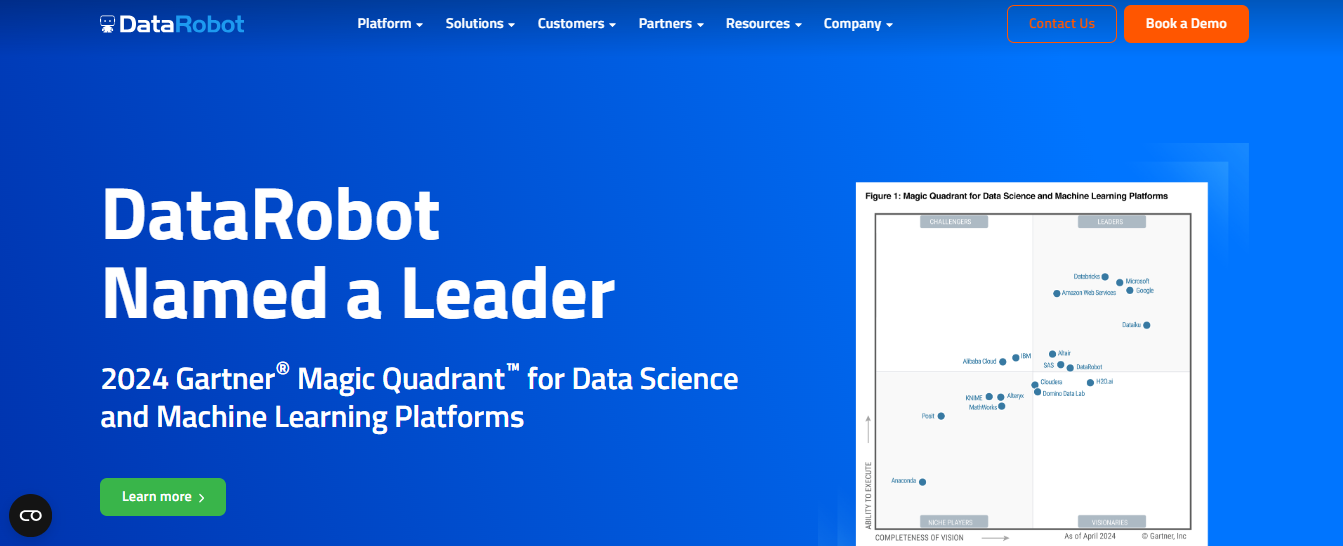
Want to predict future trends but don’t know how to build fancy AI models? No worries, DataRobot makes it easy! You don’t need to be a programming expert to use it. Just give it the data, and DataRobot builds a machine-learning model for you.
Effortless Forecasting
This is perfect for forecasting things like customer behaviour or sales. The best part? DataRobot takes care of all the technical stuff. So you can focus on understanding the results and making wise decisions.
The platform supports multiple data types and offers an easy-to-use interface. DataRobot is ideal for predictive analytics, helping you forecast trends, customer behaviour, and financial outcomes. It’s a helpful tool for anyone using AI without learning complicated coding.
5. Alteryx

Data preparation is one of the most time-consuming tasks for a business analyst. Cleaning, blending, and organizing data can take hours or even days. Alteryx helps by automating a lot of that work.
With Alteryx, you can pull data from different sources and clean it up in one place. You don’t need to check for errors or inconsistencies manually; Alteryx does that. It’s conducive when you’re dealing with big datasets from multiple sources.
Streamlining Analytics
Alteryx integrates with other tools, like Tableau, to be used as part of your existing workflow. It also helps with predictive analytics.
It’s perfect if you want to look at past data to forecast future trends. You’ll spend less time preparing the data and more time focusing on the insights that matter.
6. Microsoft Power BI

If you’re already using Microsoft tools like Excel, Power BI is an excellent addition to your toolkit. It’s designed to help you create visual reports and dashboards. What makes Power BI special is its built-in AI features.
It can automatically spot patterns and trends in your data, helping you see insights you might have missed. You can create visuals like charts and graphs, and even update them in real time. So, if you’re working on a live project or need to keep data fresh, Power BI is a great option.
Enhancing Team Collaboration
Another big plus is its collaboration feature. You and your team can collaborate on reports and dashboards simultaneously. This makes it easy to stay aligned on the data and ensures everyone is on the same page.
7. SAS Business Analytics (SAS BA)

The high-grade text analytics capabilities of the SAS-based business analytics software allow users to inspect and transform unorganized text data into relevant information that analysts can explore to discover meaningful insights.
SAS BA is fully loaded with various statistical tools, simplifying the analysis of large data sets in real time. The top-of-the-line business analytics platform also predicts future trends from the information harvested from big data.
8. QlikView

QlikView is one of the most preferred tools for business analytics because of its unique features, such as patented technology and in-memory processing, which facilitate the delivery of ultra-fast business analytics reports.
Among the best business analyst tools, QlikView allows users to visualize data relationships using specific colors for related and non-related data with automatically maintained data associations. It is compressed to 10 percent of its native size.
9. ChatGPT
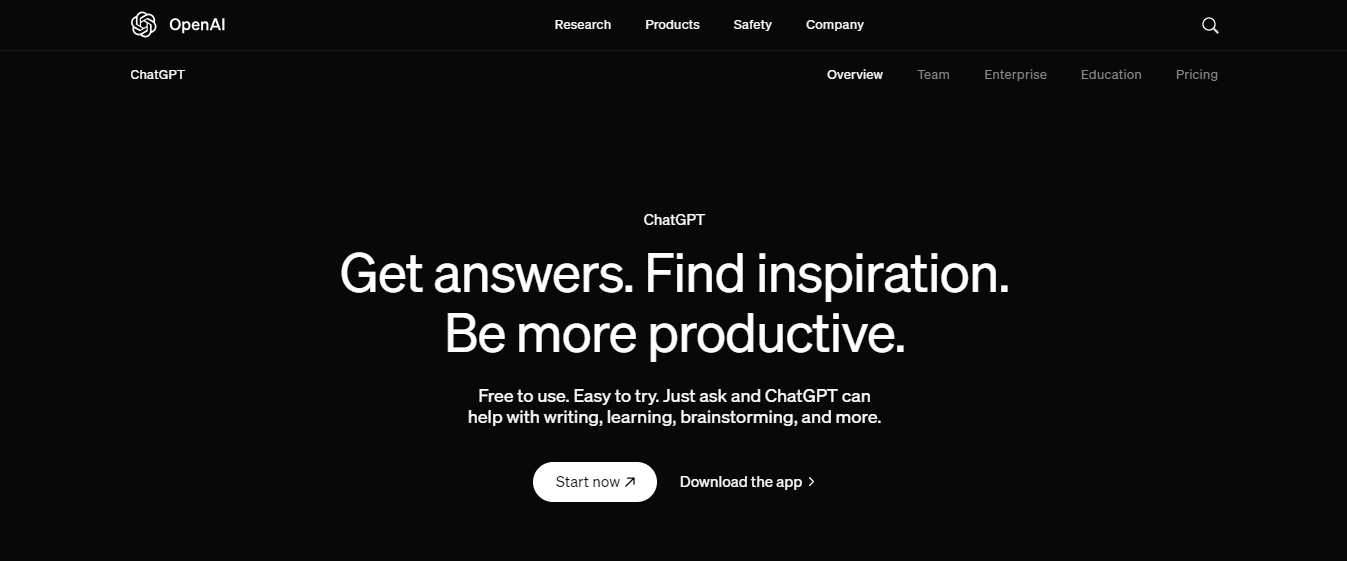
ChatGPT has quickly become the most popular AI tool worldwide, and for good reason. It’s very user-friendly and easy to use, but it's still immensely powerful and efficient, especially regarding some tasks business analysts encounter on every project.
ChatGPT, with its Natural Language Processing capabilities, can provide valuable support for business analysts in gathering, exploring, and analyzing data, gaining insights, and making well-informed decisions.
Boosting BA Productivity
This tool can also be invaluable in some more advanced tasks. Business analysts can use ChatGPT to elicit and analyse requirements, for process and data modelling, to identify and specify information on functional specifications, to create and break down user cases, and to work on business strategy.
ChatGPT can be an excellent communication and management tool, helping create reports, presentations, and similar materials based on stakeholder information. Business analysts can use ChatGPT prompts (opens in a new tab) to aid their work and improve productivity.
10. IBM Watson
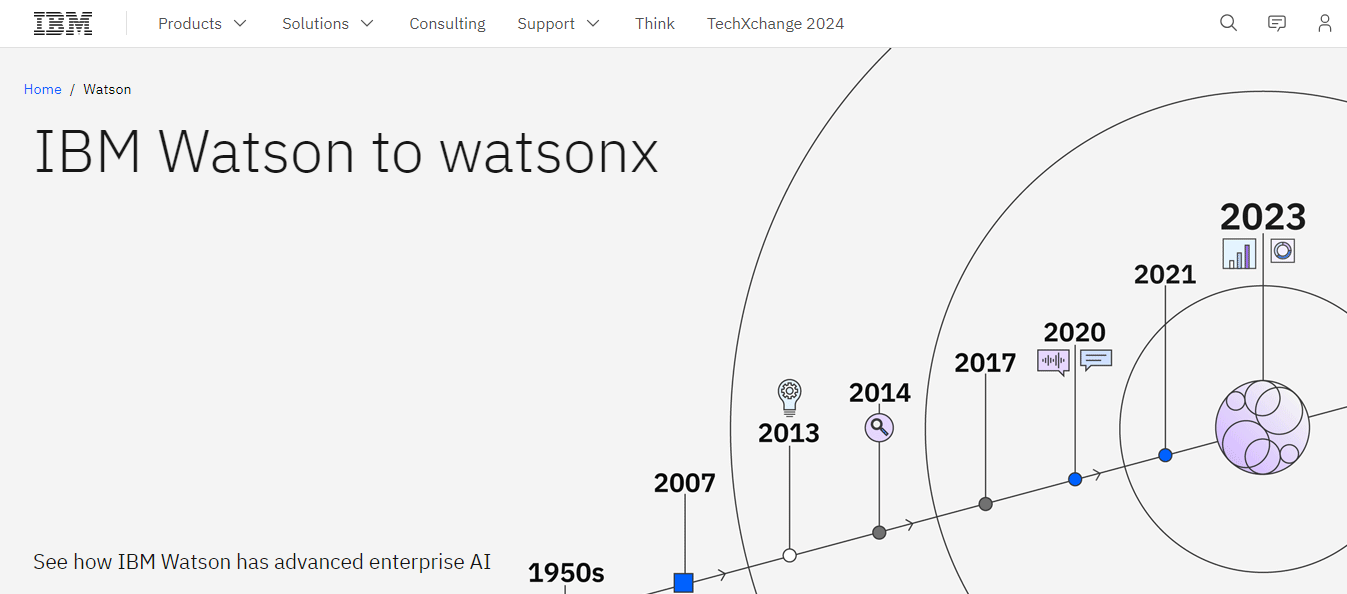
IBM Watson, a suite of artificial intelligence tools from one of the largest tech companies in the world, offers multiple opportunities for business analysts to leverage its features in their work and optimise the decision-making process.
Analyzing Data with IBM Watson for BAs
The software is mainly intended for professionals who work with large amounts of unstructured data, so it’s understandable how useful it can be for business analysts. Using Natural Language Processing and Machine Learning algorithms, IBM Watson assists in analysing and processing various forms of data, including text, images, and audio.
It’s a collaborative platform, facilitating cooperation between multiple teams and various stakeholders. IBM Watson also features powerful tools for data visualisation, so patterns and trends are much easier to identify, even when working with massive volumes of data.
11. RapidMiner
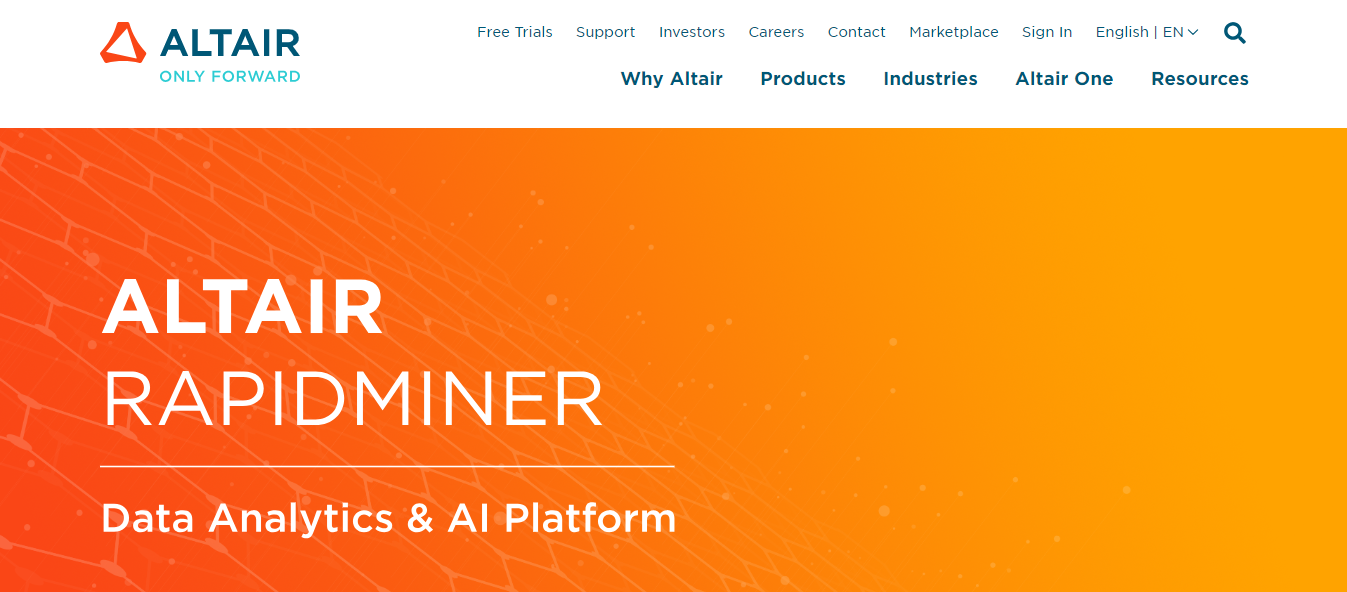
Another valuable and robust data management tool, RapidMiner, is a comprehensive platform helping business analysts analyse the combined influence of various factors within the organisation, such as:
- Data
- Employees
- Expertise
It’s very easy to use, so even BAs with no coding knowledge will have no issues using this tool to its full extent. This is mainly thanks to its user-friendly drag-and-drop interface, which significantly simplifies data analysis.
Streamlining Analysis
RapidMiner features predictive model building, data preparation automation, and an extensive library of pre-built AI models. These features allow analysts to streamline their workflow and be more efficient. Extracting insights from data is much easier with RapidMiner, and its collaborative features help facilitate teamwork and increase productivity.
12. MonkeyLearn

MonkeyLearn is a no-code, AI-powered tool providing NLP services and text analysis. Using machine learning models, the platform allows users to easily gather and extract valuable insights from textual data and visualise and organise the available information.
MonkeyLearn's user interface is very user-friendly, so even less advanced users can build, train, and deploy different customised machine learning models for various types of analysis.
Leveraging MonkeyLearn
Some of the main features offered by MonkeyLearn that business analysts may be interested in include:
- Text classification
- Sentiment analysis
- Entity and keyword extraction
Another advantage of this platform is that it comes with multiple integrations, so it will work smoothly and integrate seamlessly with any existing tools you may have already used.
13. Splunk
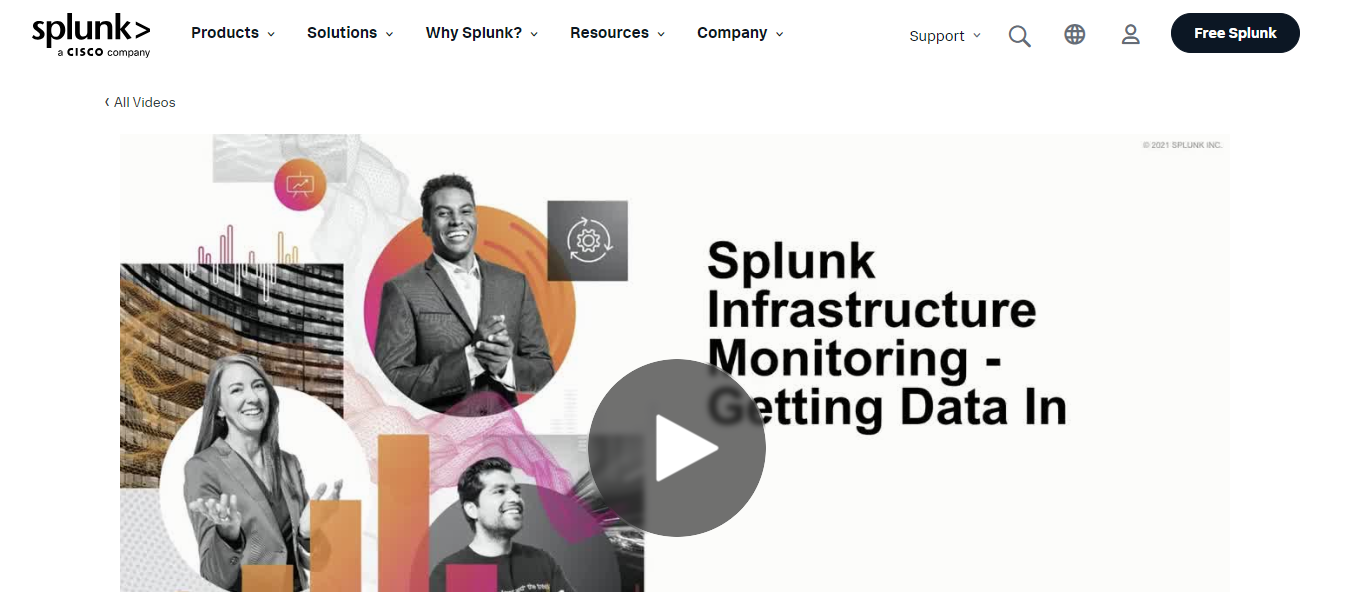
The best use of the Splunk platform for business analysis is extracting actionable insights from the available data.
A nice feature of Splunk is that you can practically use it from anywhere, within or outside the organisation’s premises, and using different devices (such as mobile phones, smart TVs, or augmented reality devices), which is very helpful in facilitating teamwork and collaboration between various stakeholders.
Real-Time Data Analysis
The platform can collect, process, and distribute data from various sources in real time, meaning that the analysis will always be up to date and can promptly identify different trends, opportunities, or risks.
14. H2O.ai
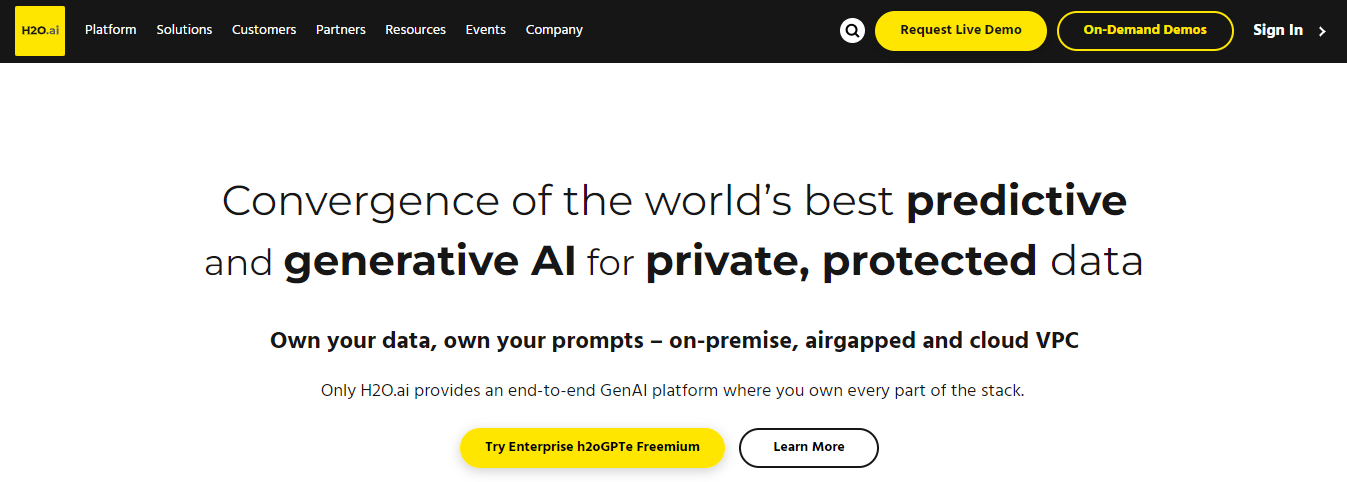
H2O.ai offers business analysts a wide range of AI and machine learning tools to improve efficiency and decision-making. H2O Driverless AI, a popular tool on this platform, automates most machine learning tasks, including data preparation, feature engineering, and model selection.
Efficient Model Development
It also provides interpretability features, allowing analysts to understand the logic behind model predictions and better understand the current trends. H2O-3, another tool offered by H2O.ai, is an open-source machine learning platform that provides a comprehensive set of algorithms and tools for data analysis and model development.
H2O is another platform that allows business analysts to develop and deploy models quickly and without hassle, without significant experience or expertise in data science.
15. Databricks
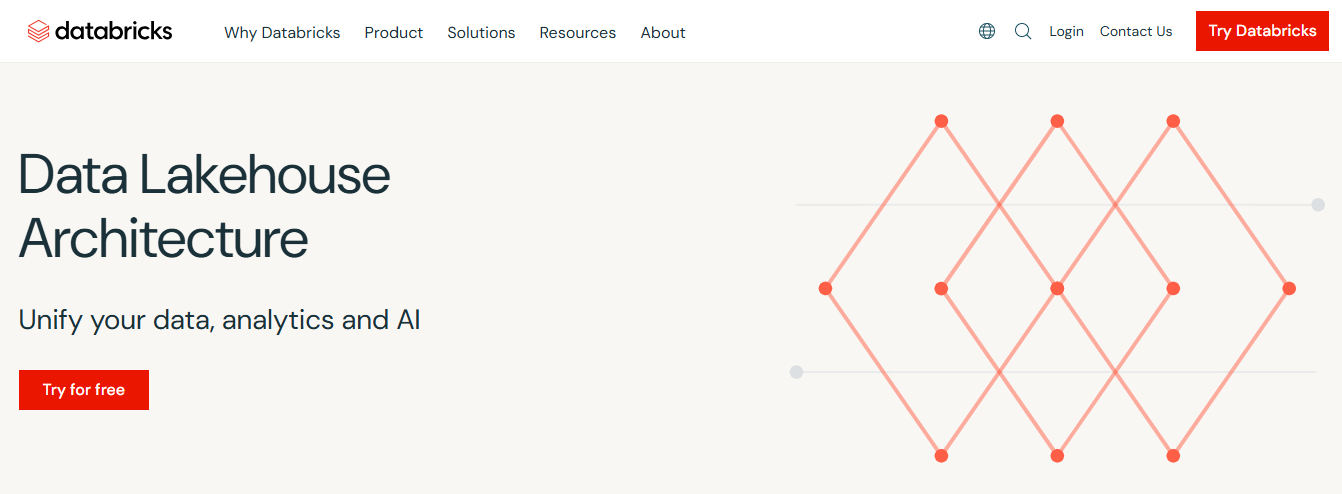
Databricks is a unified analytics platform powered by AI that combines data engineering, data science, and business analytics. It provides a collaborative environment where business analysts work alongside data engineers and scientists.
Databricks simplifies data preparation, enables analysts to build and deploy machine learning models, and supports interactive data exploration and visualization. With its scalable infrastructure and integration with popular tools like Apache Spark, Databricks empowers business analysts to leverage AI and big data technologies for advanced analytics tasks.
16. Sisense
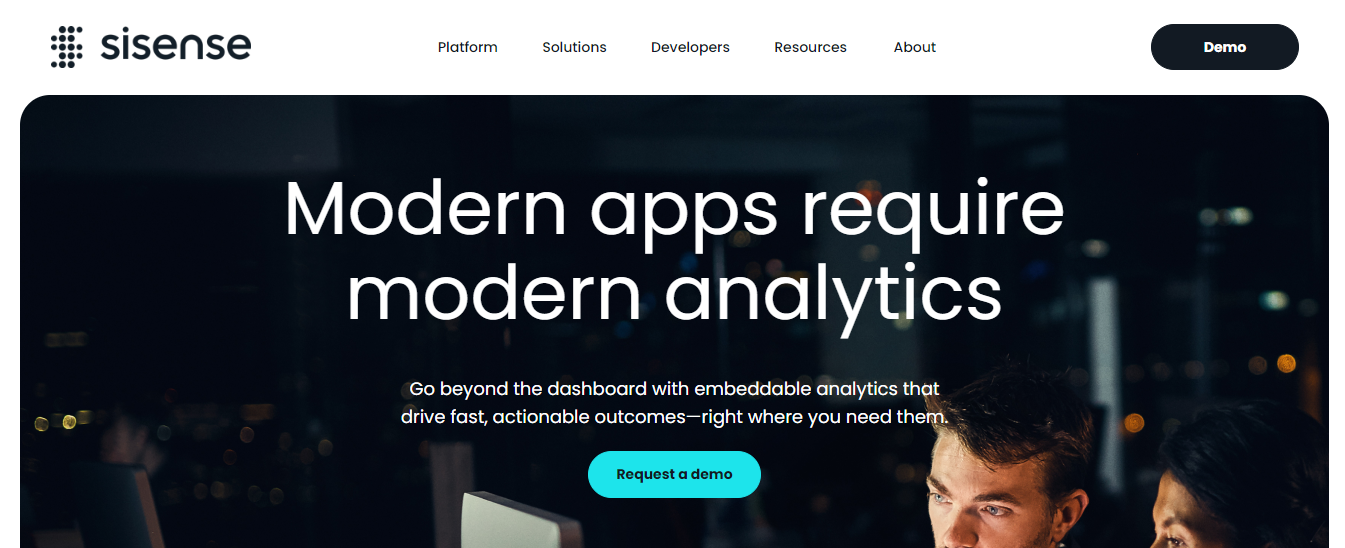
Sisense is another powerful business intelligence and analytics platform that enables business analysts to explore complex data from large data sets and derive actionable insights. Its AI-powered analytics capabilities make analysts’ jobs significantly easier, as Sisense can automate data preparation, blending, and visualisation, allowing analysts to uncover patterns and trends in real time.
Sisense offers a user-friendly interface, advanced data modelling, and natural language querying, making it accessible for analysts of all skill levels. With Sisense, business analysts can easily create interactive dashboards, share insights, and make data-driven decisions to drive organizational growth.
17. Akkio

Akkio is a straightforward yet brilliant tool for analyzing large volumes of data. It is dedicated to marketers, especially for performance tracking, campaign optimization, and visualization of results.
Data Analysis Made Easy
Akkio consists of an interactive chat dashboard where you can discuss your dataset. It’s possible thanks to the natural language processing capabilities and simple prompts. To make it work, you import data and instruct the tool. It will answer with visual representations of your data (charts) or extract particular information from a big dataset.
You can also give it further instructions for its output revision. With Akkio, you can build machine-learning models. This will help the tool recognize critical patterns faster and notify you about key anomalies.
Simplifying Marketing Analytics
Akkio supports a wide range of data sources, including Google Sheets. Again, it’s a solution suitable for professional and rookie data scientists.
Akkio is a more niche option than Power BI or Tableau. It is dedicated to marketing analysts who manage online campaigns and measure their results. What I love most about Akkio is its intuitive dashboard and machine learning algorithms.
18. Julius AI

Julius AI is just like Chat GPT but made to automate the data analysis and visualization process. Both tools’ dashboards look very similar; only the scope of features is different. You can guide Julius with queries like ChatGPT when conducting AI data analytics.
You can automate the data analysis using a dedicated query and ensure accurate, personalized insights. Thanks to its problem-solving capabilities, Julius can identify patterns and conduct predictive analytics.
Automating Analysis
The tool works with historical data and forecasts future results. This method noticeably automates data analysis. While most users recommend Julius for academic purposes, it is also handy for marketing, sales analysis, business audits, and more! Some everyday use cases of this tool include:
- Business research
- Data transformation
- Chart generation
- Statistics visualization
- Marketing automation
With Julius, you can design statistical AI models. This allows you to identify patterns faster and automate access to your insights. Julius supports many data sources, including:
- Google Sheets
- Images
- Spreadsheets
- PDFs
- Text-based files
19. KNIME
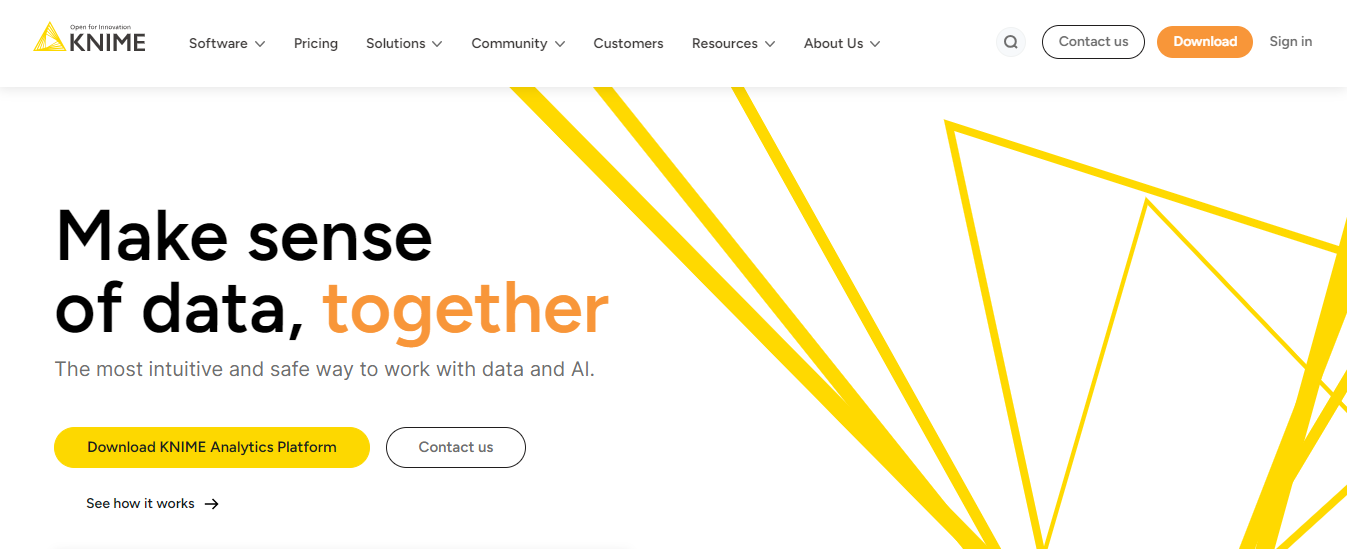
KNIME is an open-sourced AI tool for data analysis. It is universal and can be used across different business industries, departments, and use cases.
Whether you are in financial services, healthcare, or manufacturing, this business intelligence tool has a lot to offer. It can be used for various types of AI data analysis, including:
- Marketing
- Finance
- HR
- Supply chain
With KNIME, you can train machine learning models to streamline your business analytics. The tool also has drag-and-drop customization, making it easy for professional data analysts and beginners.
Choosing the Best AI Tools for Business Analysis

Before searching for AI tools, ask yourself:
- What problems am I trying to solve?
Do you want to:
- Understand customer behavior?
- Spot trends in sales data?
- Predict future demand?
- Automate reports and dashboards?
- Improve decision-making across teams?
The best forecasting tool may not be the best for visualizing KPIs or analyzing unstructured customer feedback, so clarity is key here.
Look for AI That Plays Well with Your Existing Data
Good AI tools don’t make you rebuild everything from scratch. Instead, they integrate smoothly with your current systems, whether Excel spreadsheets, CRMs like Salesforce, or cloud platforms like AWS or Google Cloud. The tool should be able to pull in data from multiple sources and turn it into insights without needing a complete IT overhaul.
Ease of Use Matters
AI doesn’t have to be intimidating. The best tools offer intuitive dashboards, drag-and-drop features, and natural language querying (think: "show me monthly sales trends in the UAE").
If only data scientists could use it, adoption across your team would suffer. Look for platforms that allow non-technical users to explore data confidently while offering analysts deeper functionality.
Go Beyond Dashboards—Look for True Intelligence
Lots of tools can visualize your data. But real AI-powered business analysis means predictive and prescriptive insights. You want a tool that doesn’t just tell you what happened but what’s likely to happen next and what to do about it.
Think demand forecasting, customer churn prediction, or product recommendations. These capabilities separate “reporting” tools from real business intelligence.
Evaluate Explainability and Trust
One of the biggest pitfalls of AI in business is blind trust. The best tools don’t just spit out conclusions, they show you how they got there. Look for features like:
- Transparent models
- Data lineage tracking
- Explainable AI (XAI) that makes complex algorithms more understandable
This builds trust across your team and makes the results usable in strategic decisions.
Don’t Forget About Scalability and Support
Maybe you’re starting small, but you want a tool to grow with you. Check for:
- Cloud deployment options
- Flexible pricing
- Strong vendor support
- Community resources or training
Also, find out how the platform handles increasing data volumes or more complex use cases down the line.
Antispace: AI Productivity OS for Smarter Workflows
Antispace transforms your daily workflow with an AI-based productivity operating system. Our platform seamlessly integrates with your essential tools:
- Calendar
- Notes
Our AI assistant handles everything from email management to task organization. We've built intelligence into every aspect of your workflow:
- Smart email responses
- Automated calendar management
- Enhanced note-taking
- Streamlined task coordination
Your AI Executive Assistant for Effortless Productivity
Antispace is your virtual executive assistant. It reduces context switching and automates routine tasks, letting you focus on what matters while our AI handles the rest.
Whether you're brainstorming ideas, managing communications, or coordinating projects, Antispace turns productivity from a chore into an engaging experience. Get started for free with one click today.
Related Reading
- Factors of Productivity
- Productivity Software Examples
- Microsoft Productivity Tools
- Improve Focus and Productivity
- Productivity Tools for VAs
- Best Free AI Tools
- Best AI Tools for Math Teachers
Implementing AI Tools in Your Business

Before bringing AI into your business, you and your team must learn about this technology. AI isn’t a magic wand you can wave to fix your problems.
It can help you improve your efficiency and services, but you must first learn what it can and can’t do. Start by reading about AI and taking online courses to boost your understanding.
Diagnose Your Business's AI Needs
Next, identify how to implement AI in your business by honing in on the issue or issues that AI could solve in your company.
For example, if you struggle with finding the right candidate for specific roles and receive more applications than you can assess, buying or creating an AI-based HR platform can help you efficiently sort through applicants to identify the ones that are likely to be the best fit.
Build a Data Strategy
Setting clear goals for implementing AI in your business allows you to create an actionable approach to its implementation. Consider the following:
- Analyze the state of your data and create measurable standards as you develop your strategy.
- Provide stakeholders with easy access to data to ensure the technology helps you reach your goals.
- Take stock of your business's current technology needs and improve processes so you can meet your AI objectives.
Choose the Right AI Tools
Consider the tasks you want AI to help you with when selecting the proper AI tool. If, for example, your company lacks the staff to write code for a specific tool, AI could be a solution. Choosing the right AI tools also requires you to act ethically and consider factors such as:
- Cybersecurity
- Data theft
- Labor upheaval
AI-generated code can present significant cybersecurity risks. The technology also learns from other developers' code without their consent, making it ethically questionable.
Develop and Train AI Models
Training your AI tool through machine learning can be one way to develop a model that does not depend on assets or data from others. Using a segment of your data and giving your AI tool specific tasks first can help your tool become familiar with your raw materials and objectives. Implement AI in your business in clear-cut scenarios first before scaling up.
Start With a Pilot Project
A pilot project allows you to assess the effectiveness of an AI tool without fully committing. Don't be afraid to involve others in the process; combining employees and external experts can lead to success. Set clear goals and a specific timeline to assess the effectiveness of the pilot project.
Evaluate
When evaluating your AI tool's effectiveness, consider its ethical impacts and its ability to help you reach your goals.
- Were there any instances of data security vulnerabilities?
- Were any small-scale issues that could be exacerbated as you scale the project?
- Could any of the tasks have been performed better by a person?
Scale Implementation
After you evaluate your tool and determine its readiness, you can integrate it into company-wide processes. It may be beneficial to have team members who worked on the pilot describe their challenges and triumphs to those who will use it in their daily work. Slowly scale up, initially using your model for simple tasks before expanding to more significant business concerns.
Related Reading
- AI Tools for Finance
- AI Tools for Small Business
- Team Productivity Apps
- Small Business Productivity Tools
- Enterprise Productivity Solutions
- Personal Productivity Tool
Let Our AI-based Productivity Operating System Handle Your Boring Work
Antispace transforms your daily workflow with an AI-based productivity operating system. Our platform seamlessly integrates with your essential tools:
- Calendar
- Notes
Our AI assistant handles everything from email management to task organization. We've built intelligence into every aspect of your workflow:
- Smart email responses
- Automated calendar management
- Enhanced note-taking
- Streamlined task coordination
Your AI Executive Assistant for Effortless Productivity
Antispace is your virtual executive assistant. It reduces context switching and automates routine tasks, letting you focus on what matters while our AI handles the rest.
Whether you're brainstorming ideas, managing communications, or coordinating projects, Antispace turns productivity from a chore into an engaging experience. Get started for free with one click today.